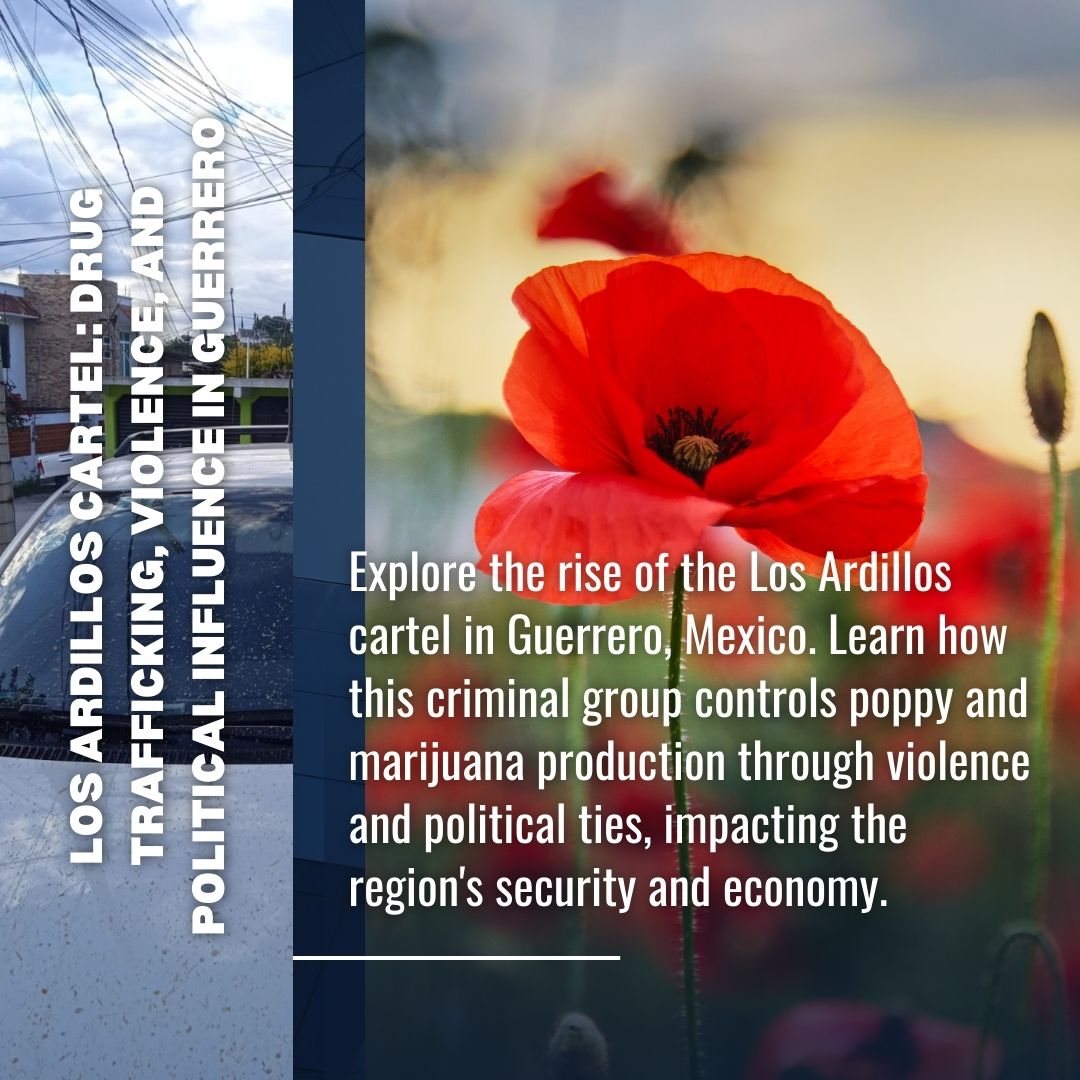Los Ardillos Cartel: Drug Trafficking, Violence, and Political Influence in Guerrero
Ardillos: Between Poppy, Marijuana, and Political Power in Guerrero
The mountains of Guerrero, one of Mexico’s most conflict-ridden regions, have witnessed how organized crime has tightened its grip on the production of poppy and marijuana. At the center of this criminal web is the Los Ardillos cartel, a group that, through political ties and a brutality that has allowed them to consolidate power, has maintained control over vast areas of the Montaña Baja region, including towns like Petaquillas.
The Rise of Los Ardillos
Founded by the Ortega Jiménez family, Los Ardillos began as a family group that, over the years, evolved into a criminal power in Guerrero. With Celso Ortega Jiménez at the helm, the group has expanded its influence by taking advantage of the region’s geography and controlling key drug trafficking routes.
What sets Los Ardillos apart from other cartels is not only their control over poppy and marijuana but also their connections to local politics. Bernardo Ortega Jiménez, Celso’s brother, has held several important political positions, including local congressman and president of the Guerrero State Congress, under the PRD banner. These connections have raised suspicions that Los Ardillos have enjoyed a degree of political protection, allowing them to operate with relative impunity.
Poppy and Heroin: The Heart of the Business
The main source of income for Los Ardillos is the production of poppy, a plant from which opium gum is extracted to make heroin. Along with Sinaloa, Guerrero is one of Mexico’s largest producers of poppy. For decades, the heroin derived from this plant has supplied the growing demand for opioids in the United States, especially during the opioid crisis that struck the country.
It is estimated that a kilogram of opium gum, the raw material for heroin, can sell for between 8,000 and 20,000 pesos in Guerrero, depending on its quality and fluctuations in demand. This variability has affected the local drug economy, especially since the rise of synthetic opioids like fentanyl, which have reduced the value of heroin on the international market.
Despite this drop in prices, poppy remains a key crop for cartels like Los Ardillos. Guerrero’s mountainous, remote terrain allows poppy cultivation to continue largely undetected by authorities. Rural communities, many under the cartel’s control or influence, are often forced or incentivized to participate in growing the plant.
Marijuana: A Business in Transition
Although marijuana has lost some of its value on the black market due to legalization in several U.S. states, it remains a crop cultivated in Guerrero. Los Ardillos have kept marijuana production as a supplementary source of income. While the price of marijuana in Mexico may range from 500 to 1,500 pesos per kilogram, its value increases significantly once it crosses the border into the U.S., where it remains illegal in some states.
The marijuana trafficking model for Los Ardillos follows a well-established distribution route: the plants are grown in rural areas controlled by the cartel, transported through key points like Chilpancingo and Acapulco, and eventually shipped north, where intermediaries ensure the drug reaches the U.S. market.
Violence and Territorial Control
Los Ardillos’ control over drug production and distribution in Guerrero has been secured through a strategy of extreme violence. The Montaña Baja region, as well as areas like Chilapa and Petaquillas, have been battlegrounds between Los Ardillos and rival criminal groups like Los Rojos, who fight for control of the territory.
In addition, Los Ardillos have clashed with local community police forces, organizations formed by indigenous and rural communities to resist cartel influence. However, the cartel’s superior firepower and its brutal crackdown on any form of resistance have made it difficult for these self-defense groups to maintain their stance.
Los Ardillos have not only used violence to expand their territorial control but have also turned to extortion and kidnapping as additional revenue streams. These crimes, combined with drug trafficking, have made Guerrero one of the most dangerous states in Mexico, severely affecting the daily lives of its residents.
Political Ties: Between PRD and Morena
The power of Los Ardillos is not limited to guns and drugs. Their political connections have played a crucial role in their ability to operate without significant interference. The PRD, the party that dominated Guerrero’s political landscape for many years, has been directly linked to the Ortega Jiménez family. Bernardo Ortega Jiménez, as a PRD politician, has been accused multiple times of protecting the interests of his family and, by extension, the cartel.
Although Morena has gained ground in Guerrero and currently controls the governorship under Evelyn Salgado, there is no clear evidence linking the party to Los Ardillos in the same way as the PRD. However, in a state where organized crime and politics are so tightly intertwined, any government is bound to face the challenge of dealing with cartel influence, whether through combat or toleration.
An Evolving Empire
Despite the drop in the price of opium gum and the shifting marijuana market, Los Ardillos remain a key player in Guerrero’s drug trade. Their ability to maintain territorial control through violence and political connections has allowed them to adapt to changes in the drug market, diversifying their income streams into activities like extortion and kidnapping.
The future of Los Ardillos is tied not only to the course of drug trafficking in Mexico but also to the political dynamics in Guerrero. The relationship between organized crime and politics will continue to pose a challenge for any government attempting to pacify one of the most violent regions in the country. Meanwhile, poppy and marijuana will continue to flow from the mountains of Guerrero northward, fueling a cycle of violence and corruption that shows no signs of ending.
